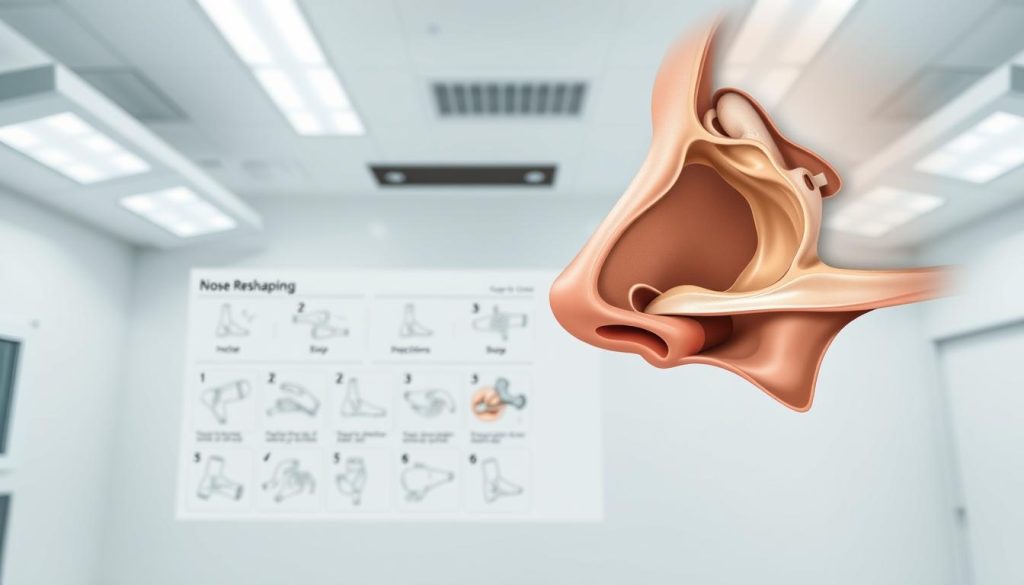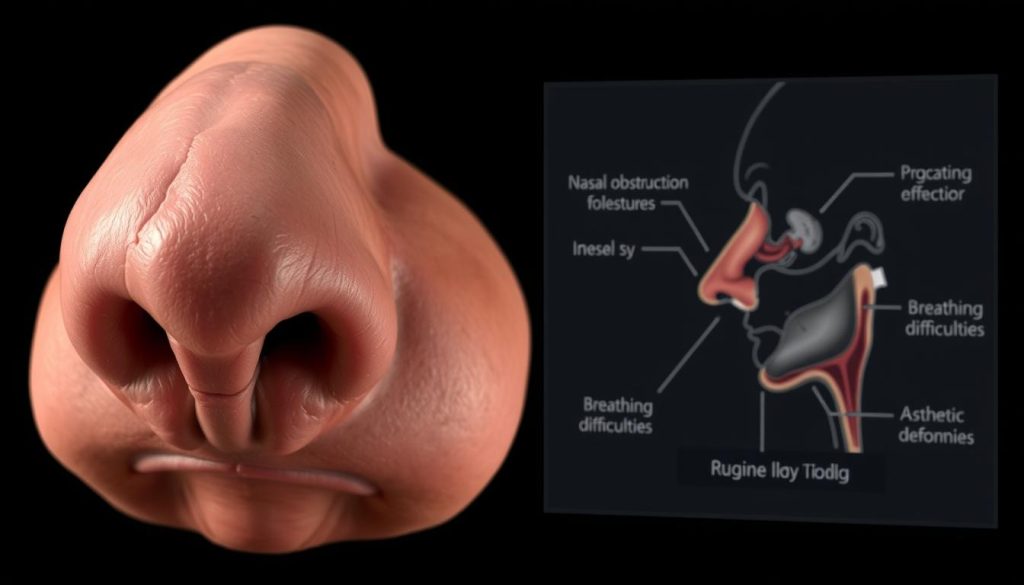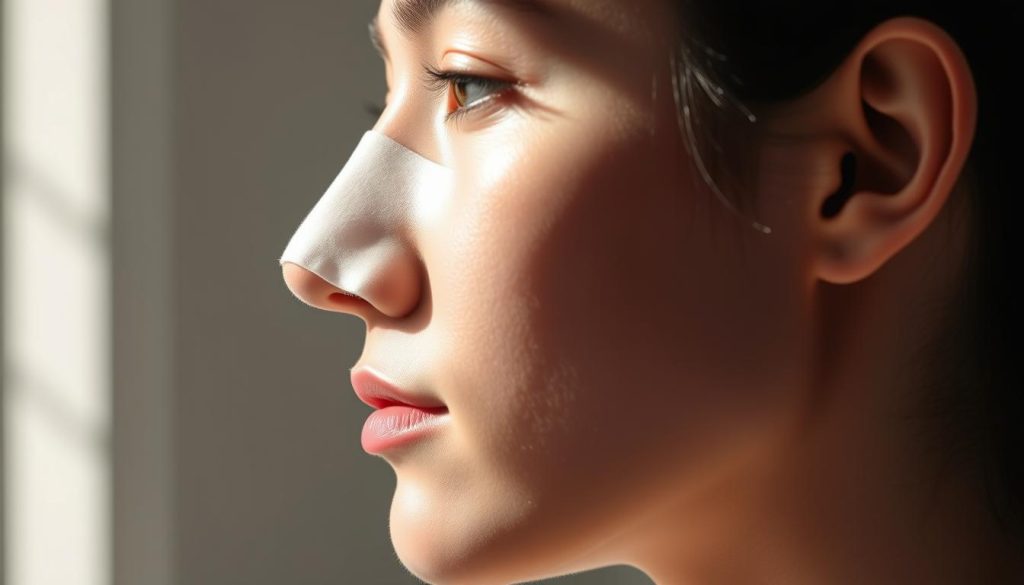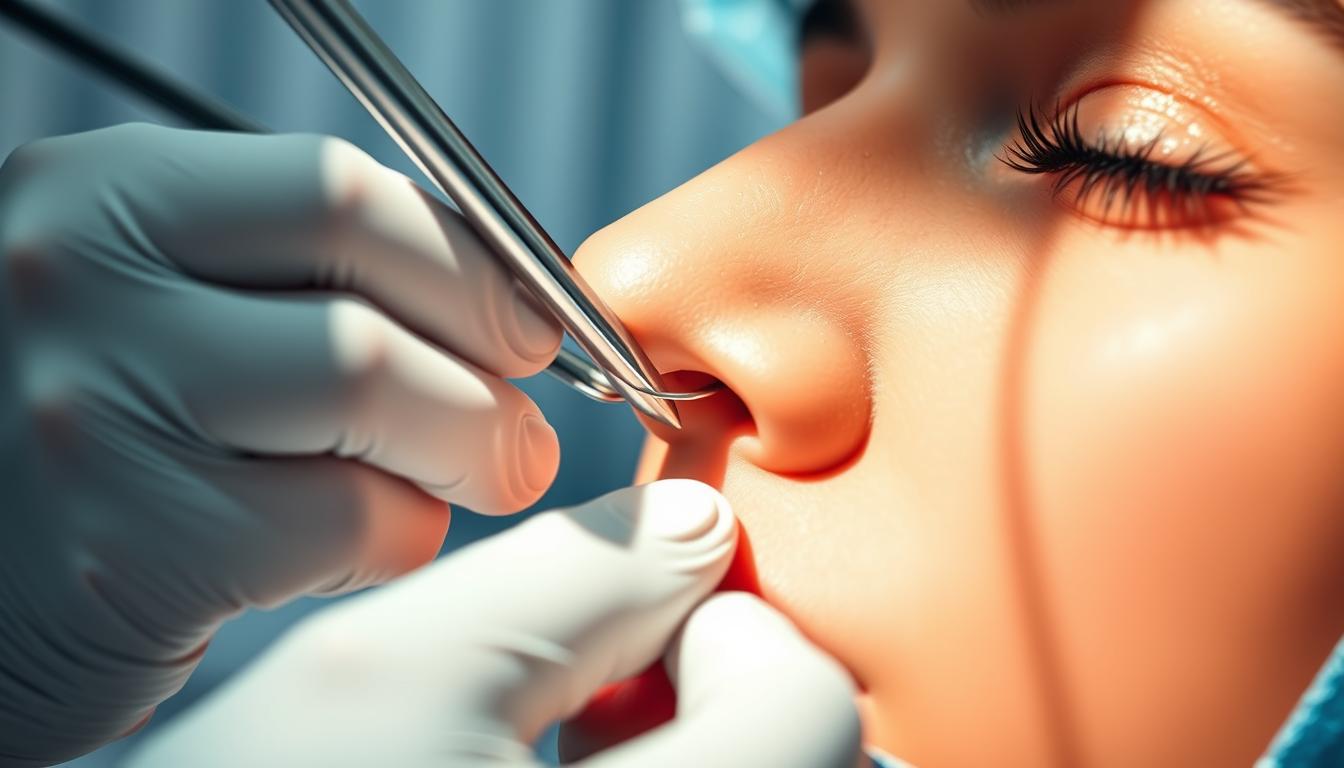Rhinoplasty, commonly known as a “nose job”, is a surgical procedure that can dramatically improve facial harmony by altering the size, shape, and proportions of the nose to better complement other facial features.
This complex facial plastic surgery can address both aesthetic concerns and functional issues such as breathing difficulties caused by structural abnormalities. The procedure requires careful planning between patient and surgeon to ensure realistic expectations and optimal results.
The nose is the most defining characteristic of the face, and even a slight alteration in its size or shape can greatly change a person’s appearance. Modern rhinoplasty techniques have made it possible for individuals to achieve their desired nose shape while maintaining a natural look.
Key Takeaways
- Rhinoplasty is a complex facial plastic surgery that can improve facial harmony.
- The procedure can address both aesthetic and functional issues.
- Careful planning between patient and surgeon is crucial for optimal results.
- Modern rhinoplasty techniques allow for a natural look.
- The surgery can greatly change a person’s appearance.
Understanding Nose Reshaping Surgery

Nose reshaping surgery, medically known as rhinoplasty, is a procedure that can significantly alter the appearance and function of the nose. By modifying the nasal structures, including bone, cartilage, and skin, a cosmetic surgeon can help achieve various goals.
What is Rhinoplasty?
Rhinoplasty is a surgical procedure aimed at reshaping the nose to improve its appearance and, in some cases, to correct breathing problems. This is achieved by surgically altering the nasal structures.
Common Reasons People Choose Nose Reshaping
People seek nose reshaping surgery for numerous reasons, primarily for aesthetic improvement. Common concerns include reducing a prominent dorsal bump, refining a bulbous tip, or correcting asymmetry. Functional issues, such as breathing problems caused by a deviated septum, also lead individuals to consider rhinoplasty.
- Addressing specific nasal concerns like bumps or asymmetry.
- Correcting functional issues such as breathing problems.
- Achieving better facial balance and harmony.
Benefits of Nose Reshaping
Nose reshaping surgery offers numerous benefits, ranging from aesthetic improvements to functional enhancements. This procedure is not just about changing the appearance of the nose; it also addresses various nasal issues that can affect breathing and overall health.
Aesthetic Improvements
One of the primary reasons individuals undergo rhinoplasty is to enhance the aesthetic appeal of their nose. The surgery can correct deformities, resize the nose, and improve its overall shape, leading to a more balanced facial appearance. A successful rhinoplasty can boost a person’s confidence and self-esteem.
Functional Benefits for Breathing
Beyond aesthetic improvements, functional rhinoplasty can significantly enhance breathing quality for patients with structural nasal issues. Procedures such as nasal septoplasty, inferior turbinate reduction, and nasal valve repair can address problems like a deviated septum, enlarged turbinates, and narrow nasal passages.
| Procedure | Purpose | Benefits |
|---|---|---|
| Nasal Septoplasty | Corrects a deviated nasal septum | Improves breathing, reduces snoring, and alleviates sinus infections |
| Inferior Turbinate Reduction | Reduces the size of enlarged turbinates | Enhances airflow, reduces nasal congestion |
| Nasal Valve Repair | Strengthens or enlarges narrow nasal passages | Improves airflow, enhances physical performance, and improves sleep quality |
The combined aesthetic and functional benefits of rhinoplasty make it a highly satisfying procedure, addressing both appearance and physiological function simultaneously. Many patients experience relief from chronic nasal congestion and reduced dependence on nasal sprays or medications following functional rhinoplasty.
The Nose Reshaping Procedure

Rhinoplasty, commonly known as nose reshaping, requires careful planning and execution. The process involves several key steps, from initial consultation to the final surgical technique.
Consultation and Planning
The journey to a reshaped nose begins with a thorough consultation. During this phase, the surgeon assesses the patient’s nasal structure and discusses their aesthetic and functional goals. This stage is crucial for determining the most appropriate surgical or non-surgical approach.
Surgical Techniques
The surgical technique used in rhinoplasty can vary depending on the patient’s needs. There are two primary methods: open and closed rhinoplasty.
Open Rhinoplasty
Open rhinoplasty involves making an incision across the columella, providing the surgeon with a clear view of the nasal structure. This method is often used for more complex reshaping.
Closed Rhinoplasty
Closed rhinoplasty, on the other hand, involves making incisions within the nostrils, resulting in no visible scarring. This technique is preferred for less complex cases.
Non-Surgical Alternatives
For some patients, nonsurgical rhinoplasty using dermal fillers can be an effective alternative. By strategically injecting filler at specific points, a skilled surgeon can smooth out bumps, reshape the nasal tip, and improve nasal symmetry. The results are temporary, lasting up to a year, making this a cost-effective way to “test-drive” a nose reshaping procedure before committing to surgery.
- Nonsurgical rhinoplasty offers a temporary solution for minor nasal refinements without surgery.
- This treatment can effectively camouflage small bumps and improve symmetry.
- The procedure typically takes 15-30 minutes with minimal downtime.
- Results from nonsurgical rhinoplasty last 6-12 months.
Potential Risks and Complications
Understanding the potential risks and complications of nose reshaping surgery is essential for making an informed decision about undergoing the procedure. While generally considered safe, rhinoplasty carries certain risks that patients should be aware of.
Common Side Effects
Common side effects of nose reshaping surgery may include swelling, bruising, and discomfort. These are typically temporary and resolve on their own within a few weeks. However, it’s crucial to follow post-operative instructions to minimize these effects.

Serious Complications to Be Aware Of
Though rare when performed by qualified surgeons, serious complications can occur. These may include infection, adverse reactions to anesthesia, and excessive bleeding. Some patients may experience unsatisfactory aesthetic results, requiring revision surgery, which occurs in approximately 5-15% of cases. Additionally, breathing difficulties can develop if too much supporting structure is removed or if internal scarring affects the nasal passages.
Patients should be vigilant for signs of infection, excessive pain, or unusual symptoms following surgery and contact their surgeon immediately if these develop. Keeping all follow-up appointments after surgery is also crucial for monitoring the healing process and addressing any potential complications or risks early on.
Recovery Timeline After Nose Reshaping
After undergoing nose reshaping surgery, patients often wonder what to expect during the recovery period. The recovery timeline after rhinoplasty can be broken down into several stages, each with its own characteristics and milestones.
Immediate Post-Surgery Period (1-2 Weeks)
Immediately after rhinoplasty surgery, patients experience swelling and bruising around the nose. This is a normal part of the healing process. The nose may feel bigger than usual due to accumulated fluid. Patients are advised to rest and follow post-operative instructions carefully to minimize complications.

Mid-Term Recovery (2-6 Weeks)
Between two to six weeks after surgery, the swelling begins to subside, and the nose starts to take on its new shape. Most patients see significant improvements in their appearance during this period. However, some residual swelling may still be present.
Long-Term Healing (6 Weeks to 1 Year)
The final results of rhinoplasty become more apparent as the swelling continues to decrease over the next several months. It can take up to a year or more for all the swelling to resolve completely. Patients should maintain regular follow-up appointments with their plastic surgeon to monitor the healing process and address any concerns.
Key milestones during the recovery period include:
- A significant reduction in swelling between 6-12 weeks, with the nose beginning to show its new refined shape.
- Minor swelling, particularly in the nasal tip, can persist for 6-12 months and may fluctuate with environmental factors or physical activity.
- The final, refined results of rhinoplasty typically emerge around the one-year mark when all residual swelling has resolved.
Ideal Candidates for Nose Reshaping Surgery
Understanding who makes an ideal candidate for rhinoplasty is crucial for achieving satisfactory results. The decision to undergo nose reshaping surgery should be made after careful consideration of several factors.
Age and Physical Development Considerations
Patients considering rhinoplasty should have reached physical maturity, as the procedure is typically not recommended for those whose facial features are still developing. For most individuals, this means being at least 15 or 16 years old for girls and 17 or 18 years old for boys. A skilled, qualified cosmetic surgeon will assess the patient’s nasal structure and overall health to determine suitability for the surgery.
Health Requirements and Expectations
For patients of any age, it is essential to have realistic expectations about the outcomes of rhinoplasty. The surgery can improve the appearance and function of the nose, but it cannot achieve perfection or replicate someone else’s nose. Key considerations include:
- Having specific, realistic goals for improving nasal appearance or function.
- Being free from certain medical conditions that could complicate surgery or recovery.
- Demonstrating psychological readiness by understanding the potential benefits and limitations of rhinoplasty.
- Not having body dysmorphic disorder or unrealistic expectations.
| Criteria | Ideal Candidate Characteristics |
|---|---|
| Age and Development | Reached physical maturity (typically 15+ years for girls, 17+ years for boys) |
| Health Status | Free from conditions like bleeding disorders, uncontrolled diabetes, or autoimmune diseases |
| Expectations | Realistic understanding of rhinoplasty’s potential benefits and limitations |
Choosing the Right Surgeon for Your Nose Reshaping
A successful rhinoplasty procedure hinges on choosing a qualified and experienced facial plastic surgeon. To achieve optimal results, it’s crucial to select a surgeon with specialized training and extensive experience in rhinoplasty. When consulting with potential surgeons, ask about their experience with rhinoplasty procedures and review before-and-after photos of previous patients.
Key factors to consider include board certification in facial plastic surgery or plastic surgery, a thorough consultation process, and a clear explanation of realistic results. The surgeon’s aesthetic philosophy should align with your desired outcome, ensuring a natural-looking nose that meets your expectations.
FAQ
What is the difference between surgical and non-surgical rhinoplasty?
Surgical rhinoplasty involves making incisions to alter the structure and appearance of the nose, while non-surgical rhinoplasty uses fillers to make temporary changes to the nose’s shape.
How long does it take to recover from rhinoplasty surgery?
The recovery time varies, but most patients can return to their normal activities within 1-2 weeks. However, it may take several weeks or even months for the swelling to fully subside and the final results to be visible.
Will rhinoplasty improve my breathing?
If the nasal septum is deviated or there are other breathing problems, rhinoplasty can help to correct these issues and improve nasal function. A surgeon will assess the patient’s condition and determine if rhinoplasty can address their breathing concerns.
Are there any risks or complications associated with rhinoplasty?
As with any surgery, there are risks and potential complications, such as bruising, swelling, and infection. A qualified surgeon will discuss these risks and take steps to minimize them.
Can I undergo rhinoplasty if I have a nasal problem, such as a deviated septum?
Yes, rhinoplasty can often be performed to address both aesthetic and functional issues, such as a deviated septum. A surgeon will assess the patient’s condition and determine the best course of treatment.
How long do the results of non-surgical rhinoplasty last?
The results of non-surgical rhinoplasty using fillers are temporary, typically lasting between 6-12 months. To maintain the desired appearance, patients will need to undergo repeated treatments.
What are the benefits of choosing a facial plastic surgeon for rhinoplasty?
A facial plastic surgeon has specialized training and expertise in rhinoplasty and other facial plastic surgery procedures, ensuring that patients receive high-quality care and optimal results.
